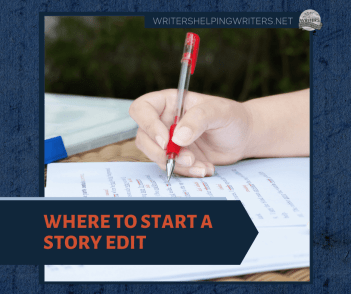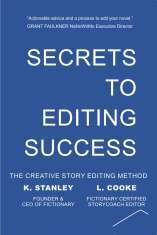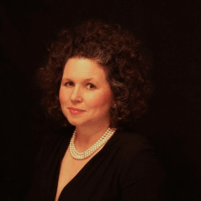Where to Start a Story Edit

By Kristina Stanley and Lucy Cooke
Do you have a draft written but aren���t sure if there is a strong story in that draft?
In our book, Secrets to Editing Success, we go into great depth on how to perform a story edit���a structural edit���on any novel. We take the theory and show you the process to story edit.
We���re going to share some of our secrets here. And the first secret is how you know if there is a story in the draft.
The Most Important QuestionDoes the draft contain a story?
That���s a big one, and how do you answer it if you���ve just written that draft? And to go deeper, how do you answer it objectively?
First, You Perform a Story Test
What do we mean when we talk about having proof that there is a story? We are asking if you can write a synopsis.
We define a synopsis as a blurb plus the five story arc scenes plus the ending. A synopsis is a cinch when you know that���s all it boils down to.
When authors find it tough to write a synopsis, it���s normally because either they don���t have an understanding of what goes into the synopsis or there isn���t a full story yet.
A story synopsis is a tool you can use to determine if there is a story in the draft manuscript. We���re not asking you to write a polished synopsis. We���re asking you to write a skeleton synopsis.
Skeleton Synopsis = Skeleton Blurb + 5 Story Arc Scenes + Resolution
The first part of the story test is to create a skeleton blurb.
Skeleton BlurbA skeleton blurb answers three simple questions.
Who is the protagonist?What is the story goal?What is at stake?The answers to these questions are found in every story. If you cannot answer them from the draft, then we can tell you the story promised is not there yet. And the draft is not ready to be edited.
With your skeleton blurb, you found the protagonist, the story goal, and the story stakes. With your skeleton synopsis, you will find the story.
The Skeleton Synopsis is Your Next ToolA skeleton synopsis is a short description of the story.
Here is an outline for the skeleton synopsis:
The protagonist _________________ finds out the story goal __________________ (Inciting Incident). Then _______________________ happens, and the protagonist must go forward toward the story goal, (Plot Point 1). In the new ���world,��� ________________ happens, and the protagonist becomes proactive to the Story Goal (Middle Plot Point). But _______________________________ happens, and the protagonist���s hope is destroyed, they realize they must change to achieve the story goal (Plot Point 2). But the protagonist ______________________, and the world changes, they finally address the story goal (Climax).
To fill in the blanks, read the draft and find the inciting incident, plot point 1, the middle plot point, plot point 2, and the climax. Use the action in each of these scenes to fill in the blanks.
You can find out more about the story arc and how to find your story arc scenes at The Story Arc: Definitions & Examples.
Listing the Story Arc Scenes Shows You Whether There Is a Story.Does the protagonist find out the story goal,then something happens that propels the protagonist onto chasing the story goal,so that they can learn to be proactive,change themselves after all hope is lost,and use what they have learned on their journey to answer the story goal that they found at the start of their journey?What you just read is the most basic form of a story. And all great stories are structurally similar.
How to Create a Skeleton Synopsis
Step 1: Perform a Hands-Off Read-Through
A hands-off read-through means you read the story without making any changes.
Step 2: Name Every Scene
You can do this when you���re performing a hands-off read-through. A hands-off read-through means you read the story without making any changes, but you can and should make notes and name every scene.
When naming the scenes, find and label the inciting incident, plot point 1, the middle plot point, plot point 2, and the climax.
Step 3: Dig Deeper into the Story Arc Scenes
To write a skeleton synopsis at this stage, the following story elements for each story arc scene will help you set it up.
Scene NamePoint of View CharacterPoint of View Character���s GoalScene MiddleScene ClimaxScene Impact on Point of View CharacterStep 4: Create the Skeleton Synopsis
Now there are four clear steps to getting that skeleton synopsis done:
Reference the skeleton blurb.Find the five Fictionary Story Arc scenes on the story arc.List scene name, scene middle, scene climax and impact on point of view character for each of these scenes.Summarize the ending showing the story���s resolution.Step 5: Does the Draft Contain a Story?
The synopsis will help you determine if there is a story or not. You���ll find that if you can���t write the synopsis at this stage, then most likely the story is not finished. The attempt at writing a synopsis will highlight which portions of the story still need to be written.
If one of the 5 story arc scenes is missing, is in the wrong place, or doesn���t satisfy the requirements of a story scene, then there isn���t a story in the draft, yet.
It���s time to start revising the draft until the skeleton synopsis shows you there is a story. Once there is a story, you can move on to a full story edit.
All of this is covered in depth in Secrets to Editing Success: The Creative Story Editing Method.
Ready to become an exceptional editor? Whether you’re working on your own manuscript or helping clients succeed, this guide shows you how to structurally edit and make every story better. Learn how to evaluate at both the story and scene level using Fictionary���s proven process and 38 Story Elements, so you know exactly what needs to be strengthened, and where!

Combining her degree in computer mathematics with her success as a bestselling, award-winning author and fiction editor, Kristina Stanley founded Fictionary and is the CEO. Fictionary helps writers and editors create better stories faster with software, an online community, editing services and training.
Her most recent publication is Secrets to Editing Success: The Creative Story Editing Method. Her novels include The Stone Mountain mystery series and Look the Other Way.��Her first novel Descent was nominated for the 2014 Arthur Ellis Unhanged Arthur for excellence in crime writing. Blaze was shortlisted for the 2014 Crime Writers��� Association Debut Dagger.

Lucy Cooke is a Fictionary Certified StoryCoach Editor and Business Development Manager at Fictionary. Secrets to Editing Success is her first book. She teaches editing through the Fictionary community, and she is an instructor for the Fictionary Certified StoryCoach program. Her passion is story, and she���s dedicated to helping others create the best story possible.
The post Where to Start a Story Edit appeared first on WRITERS HELPING WRITERS��.
Writers Helping Writers
- Angela Ackerman's profile
- 1022 followers



